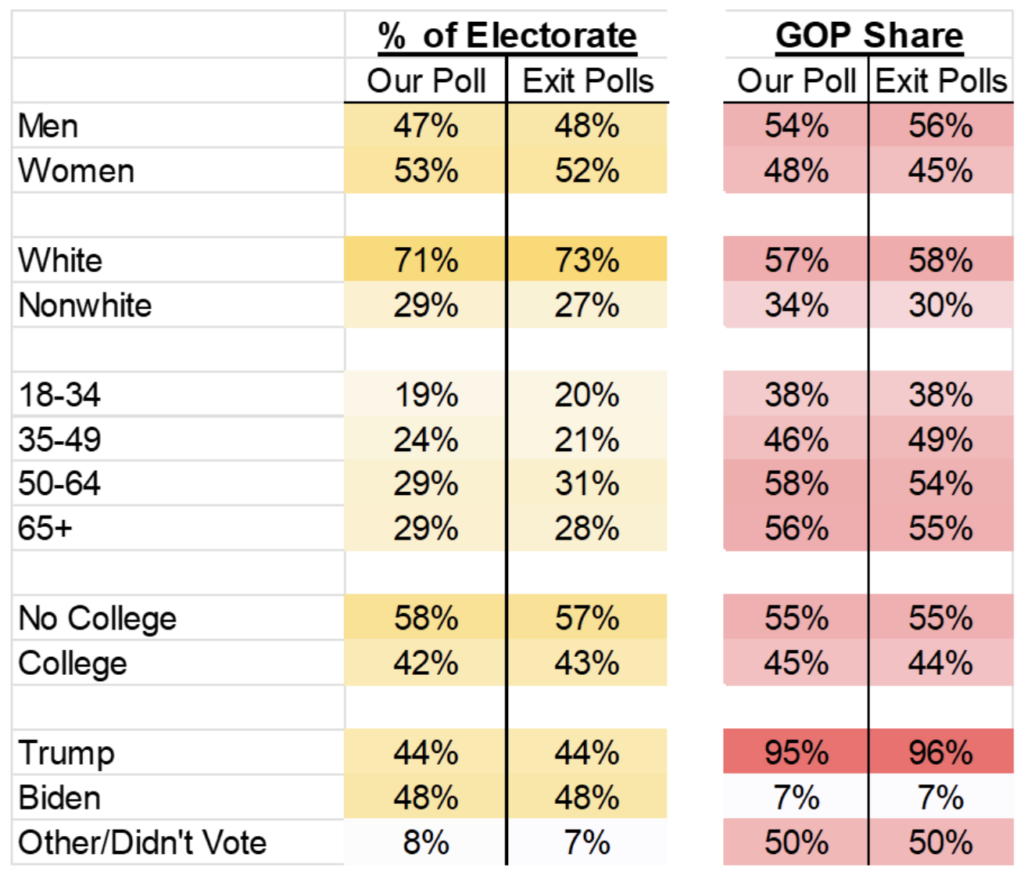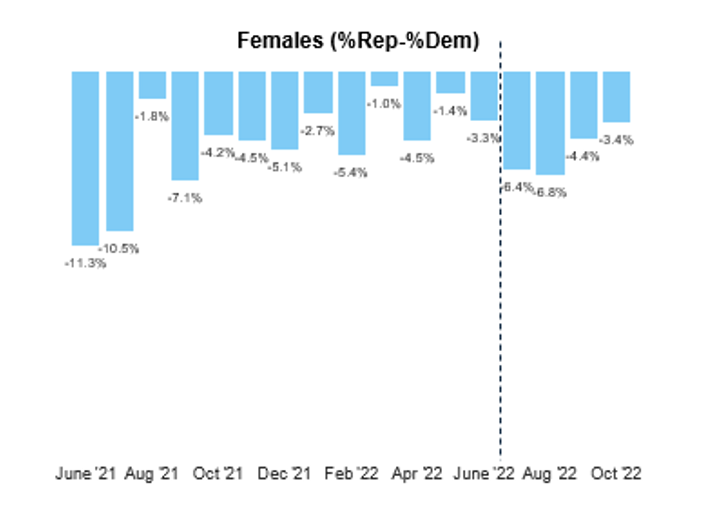Coming off what most would consider an odd election cycle, we wanted to reflect on lessons learned as one of our core values is Never Settle: We are curious, always learning, and growing.
It was a cycle where we had amazing wins with incredible clients like Governors Kemp and Abbott, Senator Mullin, Congressman Molinaro, Congresswoman Hageman, and Congressman Miller, CLF, NRCC, RGA, RAGA, and RSLC – just to name a few among the 405 general election races we conducted polling in for 2022.
We found in researching the industry as a whole that polling actually did quite well this midterm cycle. The Real Clear Politics generic ballot settled at R+2.5, very similar to the final 2.8% advantage Republicans ended up with. Cygnal was right on the mark as well, with our final national n2000 poll conducted right at the end of October at R+3.1. Before that, our last mid-October monthly District and Issue Tracker (DIT) n5000 tracking poll, which had little movement from month-to-month, came in at R+2.
For our breakdown, we’ll look at our monthly tracking DIT because that’s where we had more specific weighting by region and massive sample sizes, in addition to 14 months of tracking.
The chart below shows both our final national poll electorate against exit polling breakdown as well as the GOP two-party share against ours.
We are extremely thrilled at both our accuracy in predicting how the voters would look and the breakdown in how they would vote.

While all the demographics were close, we believe that a few things aided the most with our accuracy. The first was getting education and the recalled vote correct as that determines both the overall partisanship of the electorate and the education composition within each party.
We also worked extensively to correctly model Independents, new voters, and those who may have voted for Trump or Biden but were embarrassed — and nailed the Republican share of those voters. After 2021, some pollsters shifted to match a more Republican-friendly environment, but we had already done that. What helped Cygnal’s polling was looking at the Virginia and New Jersey results and tweaking our electorate to be older as well, which brought in more Republican voters.
If there’s a place where we could have done a bit better it was predicting a smaller gender gap as nearly every other pollster did, driven by women voting more Democratic overall.
The chart below shows that as the economy got worse, women began to move in the direction of the GOP. However, after the Dobbs decision reversing Roe v Wade, shown in the dotted line, women moved away from Republicans.

From that point, our polling then saw women slightly move back to Republicans or undecideds. In the end, there was a big state-by-state difference among female voters that a national poll doesn’t pick up, but we saw the trend overall.
Cygnal also conducted two public tracking polls, one in Ohio and the other in neighboring Michigan – each with a different methodology. Our Ohio poll (using the new methodology) ended up dead on, predicting a Vance win by 6%. However, in Michigan, our polling (using traditional tracking) underestimated Governor Gretchen Whitmer’s margin. Lesson learned: Momentum methodology for tracking is superior to traditional tracking polls. Also, Michigan had an abortion proposition on the ballot which energized Democrats to show up at higher levels.
Despite the difference in methodology, the polling was still solid and in fact had the gender gap correct. In Ohio, our final poll had a 20-point gender gap where the exit polls show a 16-point gap. In Michigan, our final poll had a much wider 30% gender gap in voting right in line with the exit poll’s 31%. Additionally, as an issue, “Women’s right to choose” was the top issue for 20% of respondents in Ohio compared to 26% in Michigan.
All in all, it was a great cycle for polling, especially Cygnal polling where we had a 96% accuracy rate. This is a testament to our team’s willingness to experiment, question the norm, and let the data drive decisions. We are also grateful to our clients who let us use the best approach to get the best data, not rely on what’s always been done.
Upward and onward to the 2023 off-year elections and the 2024 presidential cycle!

